IDEXX SDMA
SDMA Case Study: Coco

Background information
Name: Coco
Age: 9 years
Breed: Siamese
Gender: Neutered male
Presenting reason
Senior wellness visit
History
Coco recently lost his feline companion, Oscar. Since that time the owner has noticed a little bit of weight loss with possible decrease in appetite. He has also been a bit more vocal. There has been no vomiting or diarrhea. Coco has access to a water fountain, so the owner is not sure if he is drinking more. He sometimes goes into the yard, so he is also not sure if there has been increased urinations. He is not on any medications except flea control.
Physical examination
Coco is bright, alert, responsive and hydrated. He is 4.65 kg and slightly thin with a body condition score (BCS) of 4 out of 9. His temperature and respiratory rate are normal. His heart rate is 200 beats per minute which is a bit fast but there is no palpable thyroid nodule and he is nervous. The rest of his physical examination including abdominal palpation are unremarkable.
Assessment
Most of Coco’s results are within normal limits except his Catalyst SDMA test result which is increased while his BUN and creatinine remained normal. His urinalysis shows an inappropriately low urine specific gravity of 1.022 and a small amount of protein in his urine.
SDMA is more sensitive than creatinine because it detects as little as a 25 percent loss of kidney function. Additionally, SDMA increases earlier than creatinine with progressive kidney disease, so it can be the first indicator of kidney disease. SDMA can increase with acute or active kidney injury (AKI) as well as as chronic kidney disease (CKD), so it can’t just be assumed that Coco has CKD!
Plan
Coco’s Catalyst SDMA Test result is 21 µg/dL which based on the IDEXX SDMA Test algorithm indicates that kidney disease is probable. Investigation for an underlying cause and confounding factors is recommended. Therefore, a urine culture, diagnostic imaging, blood pressure measurement and urine protein to creatinine ratio (UPC) are recommended.
Test results from follow up investigation
- Urine culture: negative
- Systolic blood pressure: 151 mm Hg (borderline hypertensive)
- UPC: 0.18 (normal)
Diagnosis
CKD with probable kidney stones and borderline hypertension.
Follow up plan
- Additional investigation: Refer to a specialist for abdominal ultrasound.
- Manage: Ensure plenty of fresh water is available until recheck.
- Monitor: Recheck in 2 to 3 weeks.
Three week recheck
Owner reports Coco is doing the same at home. The ultrasound report from the specialist confirms the presence of kidney stones but there is no evidence the stones are causing an obstruction. A repeat blood pressure was the same, requiring no treatment at this time but close monitoring. Repeat laboratory results are similar to previous and chemistry results are shown here.
Assessment
Coco’s SDMA is persistently increased but slightly improved and his creatinine is stable. At this time, there is no evidence of progression in the kidney disease. Therefore, Coco’s CKD has been detected early because of SDMA and can now be staged using the International Renal Interest Society (IRIS) CKD Staging guidelines. Based on these guidelines, Coco has IRIS stage 2 CKD.
Follow up plan
Manage: Coco can be treated using the IRIS treatment guidelines. He will be gradually transitioned to a kidney therapeutic diet. This diet will not only play a key role in helping to manage his CKD, it should help to prevent additional stones from forming in his urinary tract. It is important to continue to provide Coco plenty of fresh water.
Monitor: Recheck in 2 to 4 months. In the interim, the owners are instructed to monitor him for any increase in drinking or urination, appetite change, vomiting or lethargy. These signs might indicate his kidney disease is progressing or his stones are causing blockage, and he should be rechecked right away.
Patient reports
Chemistry, 11th July 2018
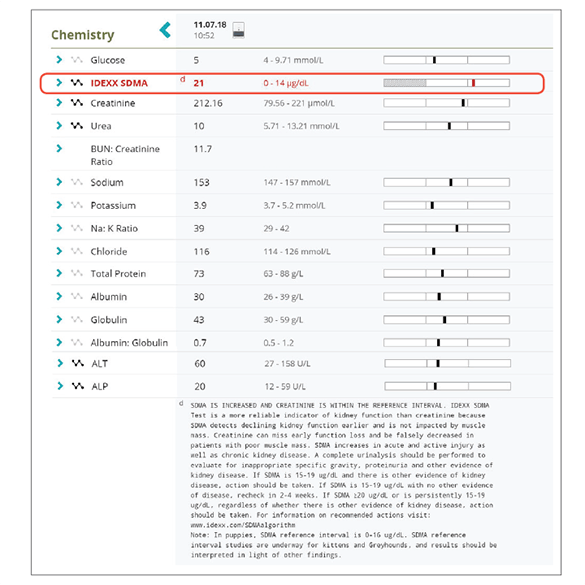
Total T4, 11th July 2018
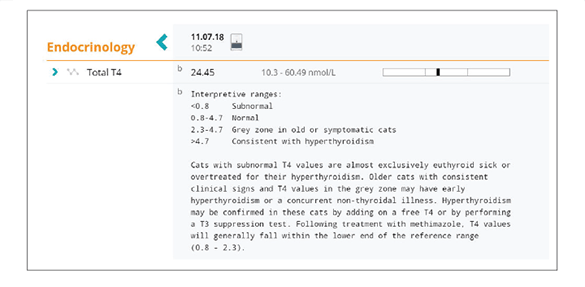
Urinalysis, 14th July 2018
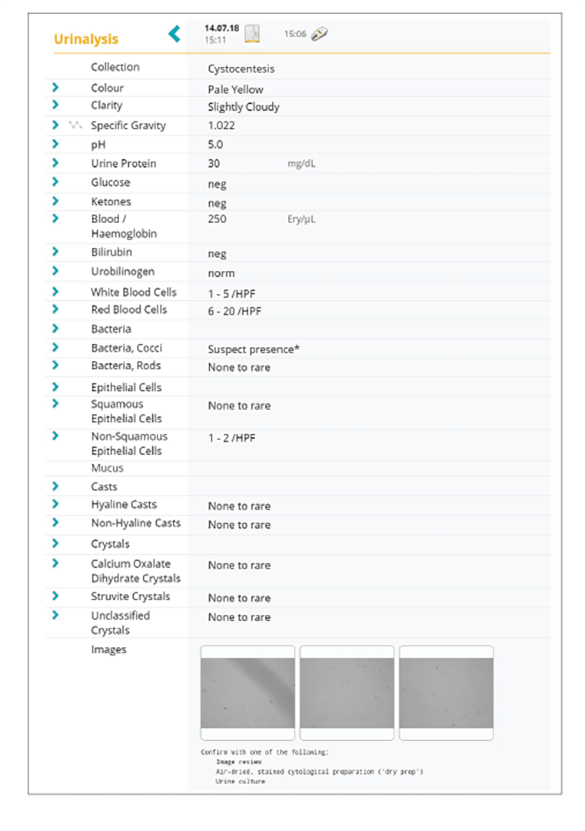
Abdominal imaging:
Slightly small, irregular kidneys, with small irregular areas of mineralization in both, possibly representing kidney stones.
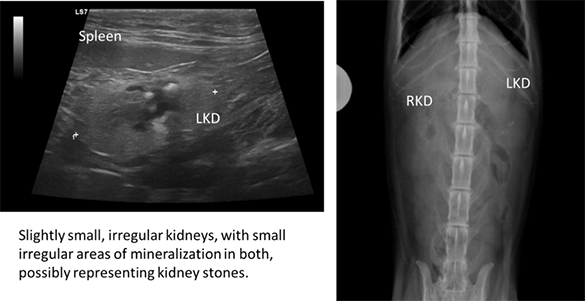
Chemistry, 15th August 2018
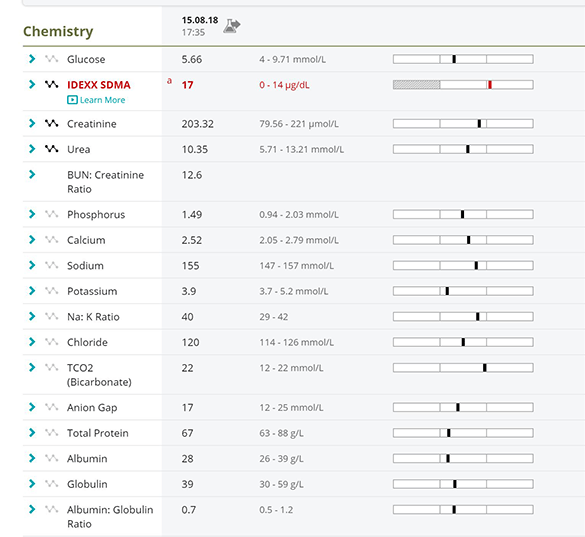
Discussion
Including the Catalyst SDMA Test in Coco’s chemistry panel in his routine preventive care lab testing lead to an early diagnosis of CKD with concurrent kidney stones. This allowed him to be treated earlier. By feeding Coco a kidney therapeutic diet, not only will this help to slow the progression of his CKD, but it will help to prevent additional urinary stones from forming which could result in more serious complications.